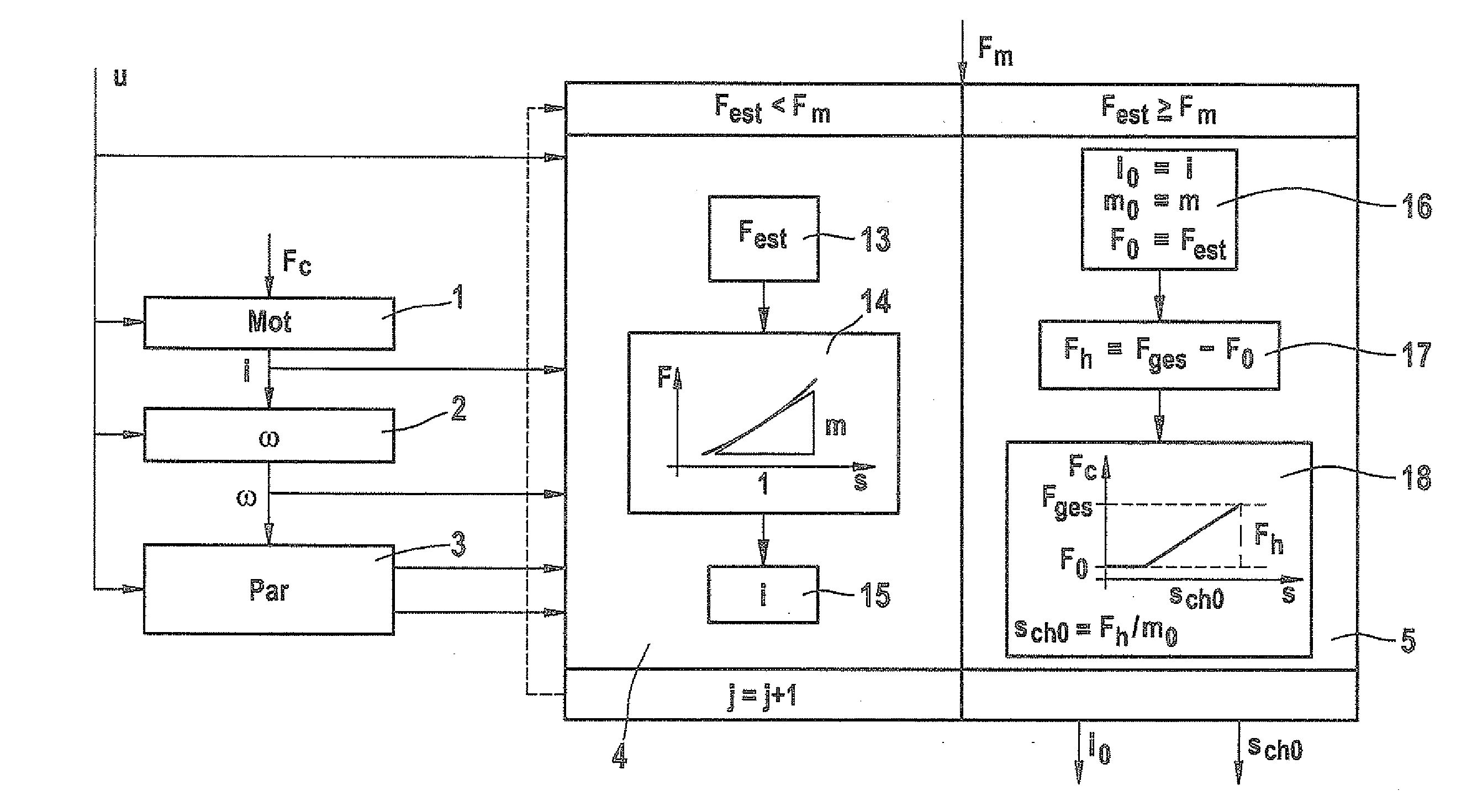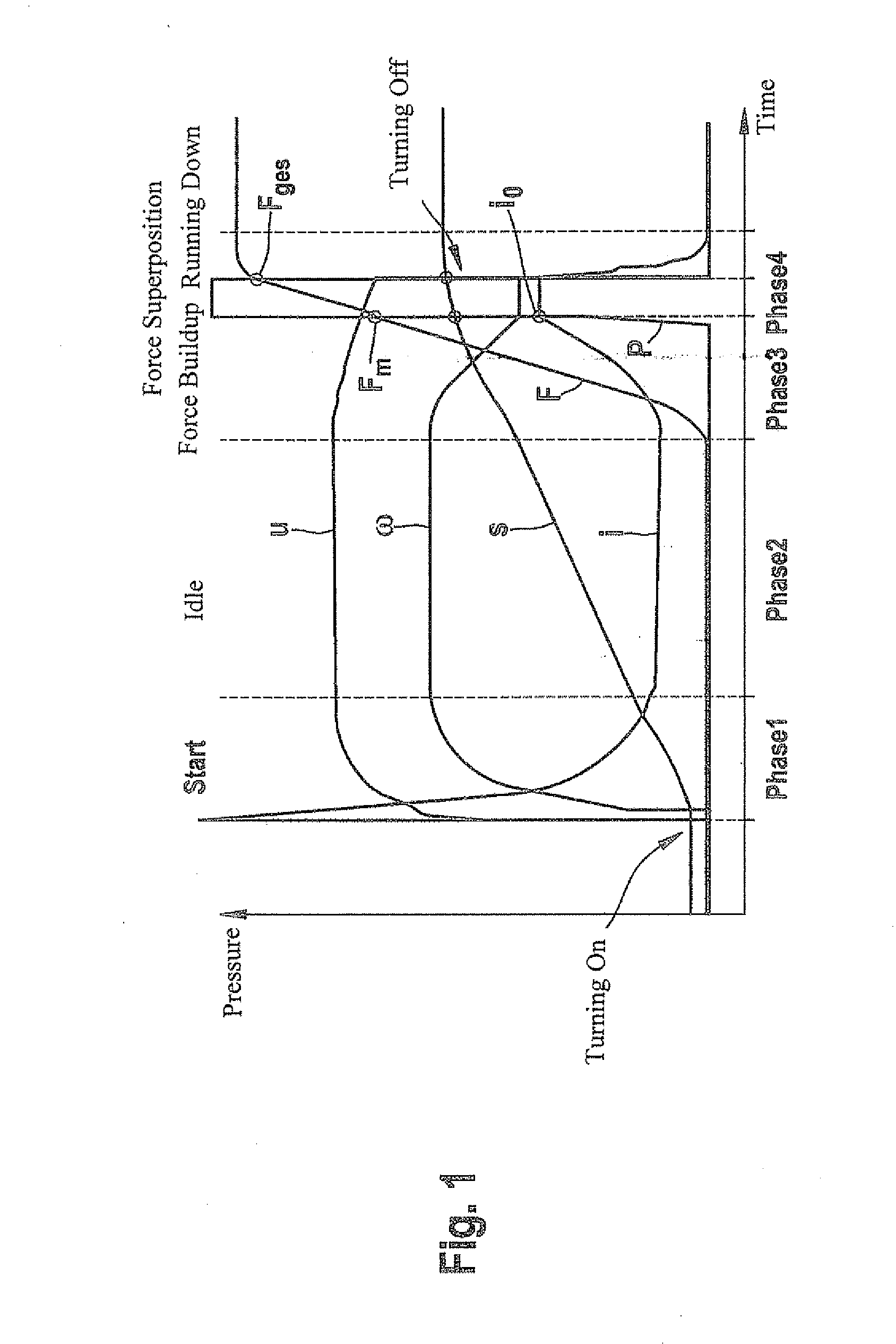Method for setting the clamping force of a hydraulically supported electric motor-driven parking brake
a technology of hydraulically supported electric motors and parking brakes, which is applied in the direction of mechanical equipment, braking systems, transportation and packaging, etc., can solve the problems of inability to determine the total clamping force relatively imprecisely, and the design of electric motors that are more weak
- Summary
- Abstract
- Description
- Claims
- Application Information
AI Technical Summary
Benefits of technology
Problems solved by technology
Method used
Image
Examples
Embodiment Construction
[0020]FIG. 1 shows the time curve of various operating variables of a parking brake during an application procedure of the brake. The application procedure may essentially be divided into four phases:
[0021]At the beginning of a phase 1, an application command is recognized and electric motor 1 installed on the wheel brake is turned on. When electric motor 1 is turned on, a starting current peak is recognizable. Current i of electric motor 1 then drops in the further curve until an idle current results at the end of phase 1. Speed ω of electric motor 1 rises in phase 1, i.e., electric motor 1 is accelerated. At the end of phase 1, speed ω of electric motor 1 reaches an idle speed. Voltage u of electric motor 1 also rises. An idle voltage results at the end of phase 1. A nut is moved in the direction of a brake piston of the wheel brake by the rotation of a spindle. Since the nut is not yet in contact with the piston floor, clamping force F is equal to zero. Pressure p of hydraulic pu...
PUM
 Login to View More
Login to View More Abstract
Description
Claims
Application Information
 Login to View More
Login to View More - R&D
- Intellectual Property
- Life Sciences
- Materials
- Tech Scout
- Unparalleled Data Quality
- Higher Quality Content
- 60% Fewer Hallucinations
Browse by: Latest US Patents, China's latest patents, Technical Efficacy Thesaurus, Application Domain, Technology Topic, Popular Technical Reports.
© 2025 PatSnap. All rights reserved.Legal|Privacy policy|Modern Slavery Act Transparency Statement|Sitemap|About US| Contact US: help@patsnap.com



